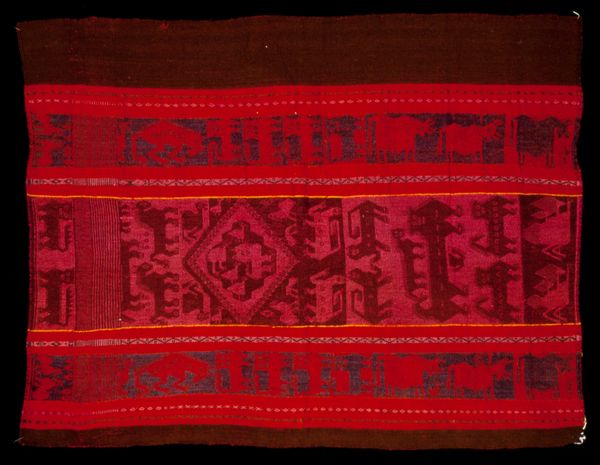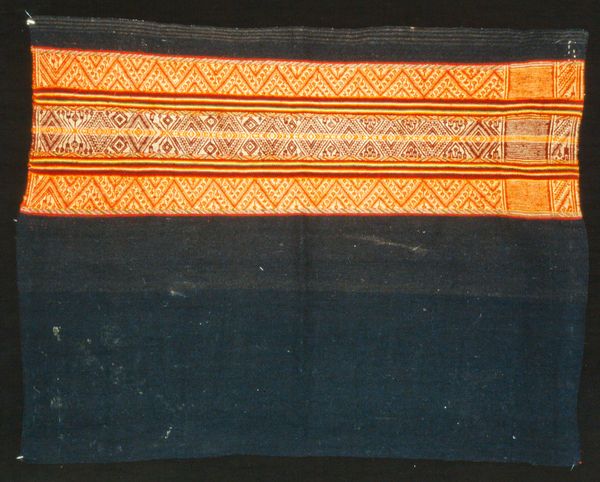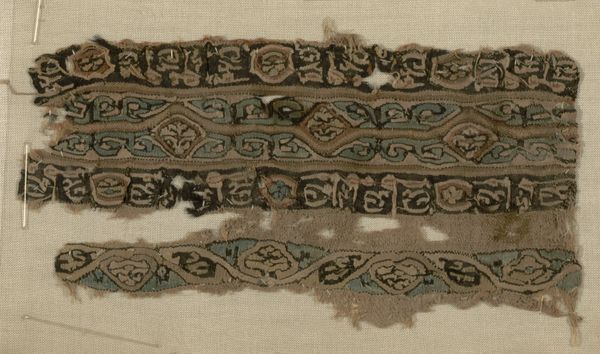
weaving, textile
#
weaving
#
textile
#
geometric
#
line
#
indigenous-americas
Dimensions: 108.3 × 15.1 cm (42 5/8 × 6 in.)
Copyright: Public Domain
Curator: Looking at this textile fragment, I feel instantly transported... almost like stepping into a forgotten storybook. It's so delicate, yet there’s something quite resilient about its existence through time, you know? Editor: Indeed. This is a textile work entitled "Fragment (Border)" created roughly between 100 and 200 AD, made from weaving by the ancient Nazca culture of Peru. It's a powerful reminder of indigenous innovation predating colonization. Curator: Nazca! That's incredible. The linear geometric designs have this very strong, but subtle pattern, almost hinting at some codified language or message embedded in its repetition. It makes me wonder about the hands that meticulously wove each thread. Were they telling a story, invoking spirits, or perhaps simply finding beauty in pattern itself? Editor: Possibly all those things. Weaving held a significant role within Andean societies; textiles functioned as vital carriers of cultural narratives and social identities. It’s speculated that the elite, through the control of textile production, projected their authority, negotiating societal values and hierarchies. The patterns themselves could represent cosmological beliefs, ancestral lineage, or ritualistic practices specific to the Nazca people. Curator: Right, like the weaving holds worlds. It is exciting to think about, you know? How a single scrap holds so much information and how that info keeps whispering through the ages! Though I can't decipher those patterns literally, it is all very visceral. This piece really calls to a collective, human consciousness. We all look for, crave, symmetry and sense in chaos, don't we? Editor: Yes. While aesthetic appreciation is important, it is paramount to acknowledge that access to and interpretation of such artistry has historically been, and sadly continues to be, defined by systems of power and privilege. Recognizing whose stories get told and how legacies are honored is central to our curatorial responsibilities. Curator: That’s so true. It's humbling to think of this fragment as not just a beautiful piece of cloth but a tangible link to a whole community, carrying whispers of their world through centuries. Editor: Absolutely. These fragmented pieces help us interrogate and re-evaluate the dominant narratives surrounding indigenous artistry, prompting us to reconsider colonial frameworks shaping our comprehension. Curator: That reframing... changes everything about how we engage, how we listen. Thank you. Editor: Indeed, a powerful moment to meditate upon representation, then and now.
Comments
No comments
Be the first to comment and join the conversation on the ultimate creative platform.













